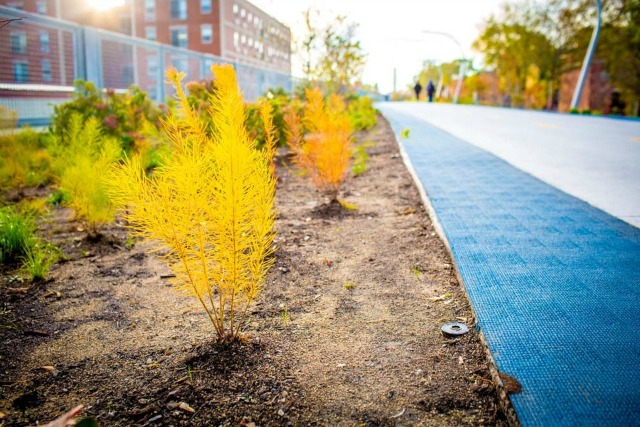Study: Crime Has Dropped Near The 606 More Than In Other, Similar Areas
By Stephen Gossett in News on Mar 2, 2017 8:56PM

The 606. Photo by Braden Nesin/Chicagoist
Ever since its inception, The 606 trail has been greeted as a mixed blessing. It's a massively popular piece of alternative-transportation infrastructure that brings out communities and beautifies the neighborhoods it reaches. It's also been criticized for sparking gentrification and sending housing prices along its West Side stretch skyrocketing.
A new study adds a major check mark to the positive column: crime rates of several kinds have declined in areas along the trail since its inception, according to researchers.
Researchers took a look at crime rates from the time before The 606 opened (between June and November, 2011) and compared them to stats from the same timeframe in 2015, when the bike-and-walk trail debuted. Neighborhoods along the trail saw a decline in a variety of crimes over that period compared with neighborhoods with the same socioeconomics, according to a study called "Examining the Impacts of an Urban Greenway on Crime in Chicago," published in February in Environment and Behavior.
“Rates of violent, property and disorderly crime all fell at a faster rate in neighborhoods along The 606 than in similar neighborhoods nearby,” lead author Brandon Harris, a Chicago resident and onetime Chicago Park District intern, said in a release. “The decrease was largest in lower-income neighborhoods along the western part of the trail.”
Upticks in residential and business activity; foot traffic; and "a greater sense of community" prompted by the trail could all be contributing factors to the downtick, according to co-author Lincoln Larson.
Still, positive impact against crime only extended so far. When looking at crime rates within a half-mile of the trail, researchers found that, while property crime fell compared to similar neighborhoods within the study's timeframe; but there was no significant drop in violent or disorderly-crime rates.
Indeed, a pattern of armed robberies along the popular rail-to-trail conversion last fall prompted a community alert from the Chicago Police Department.
Despite the positive findings, researchers further cautioned against a magic-bullet interpretation of the study. Any park and green public space has to be properly funded and maintained to remain viable and successful, said co-author Scott Ogletree. “It’s not just the presence of parks that matters. Design and programming for parks is also critical, especially considering some of the troubling crime trends in Chicago over the past year," he said. If a trail is chartered through heavily minority communities, cities have to take extra precaution to make sure those communities feel invested in such ventures, the researchers noted.
It's something developers and planners will have to keep foremost in mind amid ambitious plans like the riverfront trail proposal and Pilsen's Paseo.
[H/T DNAinfo]